Clipart tagged: ‘insectivorous birds’
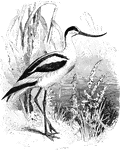
Avocets
"Recurvirostra. Avocets. Bell slender, more or less recurved, then the upper mandible hooked at the…

Common Cuckoo
This Old World bird's plumage is gray or brown. They have a long tail, strong legs, and a slim body.
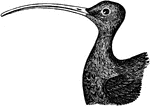
long-billed Curlew
"Numenius longirostris. Long-billed Curlew. Sickle-bill. Plumage very similar to that of the Godwit,…

American Dipper
"Adult, in summer: Slaty-plumbeous, paler below, inclining on the head to sooty-brown. Quills and tail-feathers…
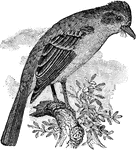
Ash-throated Flycatcher
"Myiarchus cinerescens. Ash-throated Crested Flycatcher. Rather olivaceous-brown above, quite brown…

Derby Flycatcher
"Pitangus derbianus. Derby Flycatcher. Under parts light wood-brown, with an olive tinge; wings and…

Swallow-tailed Flycatcher
"Milvulus forficatus. Swallow-tailed Flycatcher. Scissor-tail. Crown patch orange or scarlet. General…
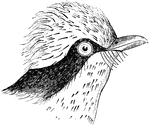
Vermilion Flycatcher
"Pyrocephalus rubineus mexicanus. Vermilion Flycatcher, Adult male: Pure dark brown, including stripe…
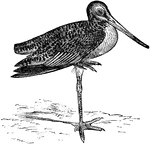
Marbled Godwit
"Limosa fedoa. Great Marbled Godwit. Marlin. Feathers not extending on side of lower mandible to a point…

Large Night-hawk
"Chordediles poptue. Night-hawk. Bull-bat. Above, mottled with black, brown, gray and tawny, the former…

Small Night-hawk
"Chordediles poptue. Night-hawk. Bull-bat. Above, mottled with black, brown, gray and tawny, the former…
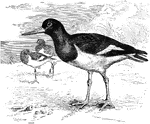
European Oyster-catcher
"Haematopus ostrilegus. European Oyster-catcher. (oyster-opener would b a better name, as oysters do…
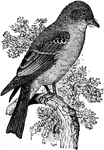
Wood Pewee
"Contopus virens. Wood Pewee. Olivaceous-brown, rather darker on head; with sides washed with a paler…

Wilson's Phalarope
"Steganopus wilsoni. Wilson's Phalarope. Bill and feet black. Crown of head pale ash, passing into white…
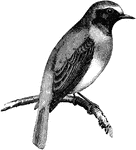
Redstart
"Our Ruticilla phoenicurus,the Redstart, is grey, with brown wings, chestnut breast, rump, and lateral…
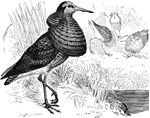
Ruff
"Machetes pugnax. Ruff. Reeve. Combatant. Gambetta. Varied above with black, brown, buff and chestnut,…
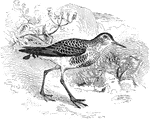
Sanderling
"Calidris arenaria. Sanderling. Ruddy "Plover". Adult in summer: Entire upper parts and neck all round…

Buff-breasted Sandpiper
"Tryngites rufescens. Buff-breasted Sandpiper. Above, brownish-black with a greenish gloss, every feather…

Solitary Sandpiper
"Rhyacophilus solitarius. Solitary Tattler. American Green Sandpiper. Solitary Sandpiper. Above, dark…

Spotted Sandpiper
"Tringoides macularius. Spotted Sandpiper. Above, silken ashen-olive (quaker-color- as in our cuckoos)…
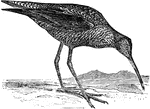
Stilt Sandpiper
"Micropalama himantopus. Stilt Sandpiper. In summer: blackish, each feather edged and tipped with white…
Red-breasted Snipe Head
"Macrorhamphus griseus. Red-breasted Snipe. Gray Snipe. Brown-back. Dowitcher. In summer:Under parts…
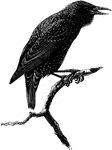
Common Starling
"Our familiar Starling (Sturnus vulgaris) being iridescent black, with buff markings above, and, after…
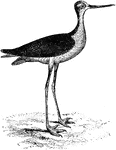
Stilt
"Himantopus. Stilts. Bill extremely slender, but not flattened, nor turned up, nor hooked; longer than…

Black-necked Stilt
"Stilt. Long-shanks. Lawyer. Adult. Mantle, constituted by the interscapulars, scapulars, and wings…
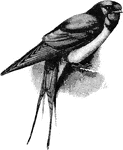
Swallow
"Hirundo rustica, the Swallow, is metallic black, with a variable amount of chestnut or rufous on the…
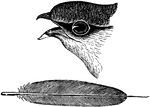
Chimney Swift Head and Feather
"Chaetura pelasgica. Chimney Swift. Chimney "Swallow". Sooty-brown, with a faint greenish gloss above;…
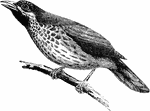
Babbling Thrush
"Timelia maculata, the Babbling Thrush, sexes are commonly alike, the plain rufous coloration being…
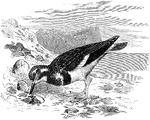
Turnstone
"Strepsilas interpres. Turnstone. Brant Bird. Calico-back. Pied above with black, white, brown, and…
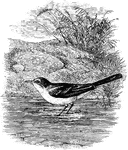
Yellow Wagtail
"Motacilla raii, the Yellow Wagtails, are generally black and white, grey and white, grey with a yellow…
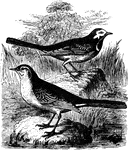
A White and Yellow Wagtail Sitting on the Rocks
A (Motacilla alba) or White Wagtail (upper) and a (Motacilla flava) Yellow Wagtail (lower) sitting on…

Yellow Wagtail Head and Foot
"The Yellow Wagtail or Motilla flava has characters of the Motacilla alva; tail shorter, not exceeding…
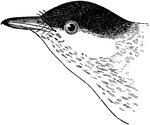
Black -poll Warbler
"Black-poll Warbler or Dendroica striata. Back, rump, tail-coverts grayish-olive, heavily streaked with…
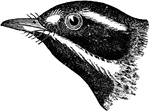
Black-throated Gray Warbler
"Black-throated Gray Warbler or Dendroica nigrescens. Above, bluish-ash, the interscapular region, and…
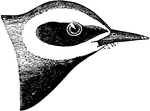
Blue Golden-Winged Warbler
"Blue Golden-Winged Warbler or Helminthophila chrysoptera. Upper parts slaty-blue, or or fine bluish-gray;…
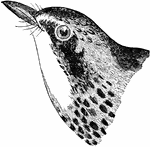
Canada Warbler
"Myiodioctes canadensis. Canadian Fly-catching Warbler. Canada Warbler. Bluish-ash; crown speckled with…
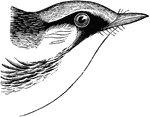
Chestnut-sided Warbler
"Chestnut-sided Warbler, Dendroica pensylvanica. Back streaked with black and pale yellow (sometimes…
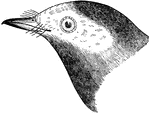
Hooded Warbler
"Myiodioctes mitratus. Hooded Fly-catching Warbler. Hooded Warbler. Clear yellow-olive above; below,…
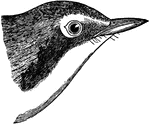
Kentucky Warbler
"Kentucky Warbler. Oporornis formosus. Clear olive-green; entire under parts bright yellow, olive-shaded…

Magnolia Warbler
"Black -and-Yellow Warbler. Magnolia Warbler. Back black, usually quite pure and uninterrupted in the…

Yellow-rumped Warbler
"Yellow-rumped Warbler or Dendroica coronata. Yellow-crowned Warbler. Myrtle Bird. Slaty-blue, streaked…
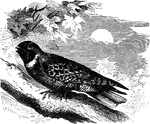
Large Whippoorwill
"Antrostomus vociferus. Whippoorwill. Night-jar. Upper parts variegated with gray, black, whitish, and…

Small Whippoorwill
"Antrostomus vociferus. Whippoorwill. Night-jar. Upper parts variegated with gray, black, whitish, and…

Willet Head
"Symphemia semipalmata. Semipalmated Tattler. Willet. Adult in summer: Upper parts ashy, confoundedly…
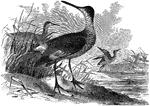
Willets
"Symphemia semipalmata. Semipalmated Tattler. Willet. Adult in summer: Upper parts ashy, confoundedly…

European Wren
"European Wren. Feet strictly laminiplanter, as usual in Oscines. Tail thin, with narrow parallel-edged…

Rock Wren
"Upper parts pale brownish-gray, minutely dotted with blackish and whitish points together, and usually…

Greater Yello-shanks
"Totanus melanoleucus. Greater Tell-tale. Greater Yellow-shanks. Long-legged Tattler. Stone-snipe. Bill…
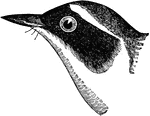
Common Yellowthroat
"Geothlypis trichas. Common Yellowthroat. Yellow-throated Ground Warbler. Maryland Yellow-throat. Upper…